Samordnet innsats for å lure det medisinske samfunnet og innbyggerne for folkehelserisikoen ved luftsprøyting ved å lyve, tvang og presse redaktører og journalister for å trekke tilbake fagfellevurderte og publiserte vitenskapelige artikler om folkehelse (klikk her).Hvordan kan en ikke-vitenskapsmann forstå luftsprøytingen og dens konsekvenser, spesielt på helsen? En måte er å lytte til og se på vitenskapelig korrekte musikkvideoer hvis tekst er skrevet av J. Marvin Herndon. (Klikk her)Hva sprayer de i luften vi puster inn? Rettsmedisinske vitenskapelige undersøkelser stemmer overens med kullflue ask det giftige avfallsproduktet fra å bole kull er hovedstoffet som sprøytes ut i luften vi puster inn (klikk her).Hvordan påvirker partikler som sprayes i lufta været? Vedvarende luftsprøyting av svevestøv i områdene der skyer danner (1) hemmer nedbør til poenget med massive nedløp, den såkalte «tørke eller flom» -effekten, (2) varmer atmosfæren, (3) forsinker varmetapet fra Jorden, og (4) absorberer sollys når den faller til jorden. Kort sagt ødelegger antennesprayen den naturlige værsyklusen, forurenser jordens biosfære og forårsaker global oppvarming – konsekvenser som falske skylder på brenning av fossilt brensel. Les merhttps://youtu.be/_GB_D9wi0vw
DELE DENNE:
YOUTUBE.COMMarvin Herndon nuclear geophysicist on the corruption in science!his website is nuclearplanet.com
Samordnet innsats for å forårsake tilbaketrekning av fagfellevurderte og publiserte
folkehelsevitenskapelige papirer på en uberettiget måte av J. Marvin Herndon, Ph.D.
Bare om lag 1 av 15 000 vitenskapelige artikler som er fagfellevurdert og publisert, blir deretter trukket tilbake av tidsskrifter, vanligvis fordi de er falske eller har blitt publisert før. Da jeg begynte å publisere vitenskapelige artikler som ga bevis for identifikasjonen av det giftige stoffet som ble sprøytet ned i den nedre atmosfæren for vær / klimaendring, var det ikke ett, men tre forsøk (to vellykkede) for å forårsake tilbaketrekking av min fagfellevurderte, publiserte folkehelsevitenskapelige artikler. For de to tilbaketrekningene ga redaksjonen / tidsskriftene meg aldri den ordrette kritikken for mitt svar. Dette er etikken til den spanske inkvisisjonen, ikke etikken til antatt vitenskapelige tidsskrifter. Tilbaketrekningsinnsatsen, hevder jeg, var en velorganisert innsats (CIA?) For å lure det medisinske, miljø- og folkehelsemiljøer, og allmennheten om den nå nær daglige, nærmeste globale troposfæriske geoingeniøren, som forgifter luften vi puster inn og biota i miljøet vårt, samt endrer vårt vær / klima med potensielt ødeleggende resultater. De samordnede anstrengelsene for å forårsake tilbaketrekningene viser at de høye tjenestemennene som bestilte sprøyting, vet veldig godt at de forgifter menneskeheten og ønsker å skjule det faktum. Etter mitt syn, og jeg hevder, er det høyforræderi. De samordnede anstrengelsene for å forårsake tilbaketrekningene viser at de høye tjenestemennene som bestilte sprøyting, vet veldig godt at de forgifter menneskeheten og ønsker å skjule det faktum. Etter mitt syn, og jeg hevder, er det høyforræderi. De samordnede anstrengelsene for å forårsake tilbaketrekningene viser at de høye tjenestemennene som bestilte sprøyting, vet veldig godt at de forgifter menneskeheten og ønsker å skjule det faktum. Etter mitt syn, og jeg hevder, er det høyforræderi.
I det følgende beskriver jeg kort de tre kjente trekkinngrepene, gir lenker til relatert kommunikasjon og dokumenter, og lister opp personer som er kjent for å ha vært involvert, som kan gi utgangspunkt for etterforskning.
Mislykket forsøk på tilbaketrekning : » Aluminiumsforgiftning av menneskeheten og jordens biota ved geologisk ingeniøraktivitet: implikasjoner for India » (nåværende vitenskap)Da de troposfæriske sprøyteløypene ble en nesten daglig forekomst i San Diego, hadde jeg bekymring for helsen til familien min. Men ingen informasjon var tilgjengelig fra offentlige tjenestemenn eller i den vitenskapelige litteraturen. Men det var mye informasjon (og desinformasjon) på Internett. Mange innbyggere fikk analysert regnvannsprøver, men uten å vite hvilke elementer de skulle spesifisere mest, hadde bare spesifisert aluminium, noen ba også om barium, og sjelden også strontium. Disse elementene og mange flere utvaskes lett fra kullflyveaske med vann. Videre er kullflyveaske et viktig avfallsprodukt i den mer eller mindre ideelle kornstørrelsen for aerosolisering. Kullflyveaske må fanges opp i vestlige land fordi det er svært giftig for både planter og dyr, inkludert mennesker. Så, (klikk her) . Svært snart etter at papiret ble publisert, mottok Current Science-redaktøren en kommunikasjon lastet med kritikk og et krav om tilbaketrekking. Denne redaktøren, som var en mann med integritet, sendte meg ordrett kommentarene for mitt skriftlige svar (klikk her) . Current Science-redaktøren hadde til hensikt å publisere kommentarene til klageren, identifisert som Andras Szilagyi , sammen med mitt svar, men Szilagyi nektet å gi samtykke.
Første vellykkede tilbaketrekningshandling: » Evidence of Coal-Fly-Ash Toxic Chemical Geoengineering in the Troposphere: Consequences for Public Health » (International Journal of Environmental Research and Public Health (MDPI)) Etter publisering av ovennevnte Current Science-papir, sendte jeg inn en mer langvarig manuskript til MDPI-journal. Den ble gjennomgått, revidert, akseptert og publisert. Da slo desinformasjonsteamet til. De var så vellykkede med å lure og presse journal personell om at papiret mitt ble trukket tilbake uten å gi meg ordrett kommentarer eller gi meg muligheten til å svare. Et individ, Jay Reynolds, skrøt til og med på Facebook at han hadde reist for å ha et ansikt til ansikt-møte med redaktøren, antagelig for å formidle desinformasjon uten å legge igjen en papirspor. Den eneste informasjonen om spesifikk kritikk ble publisert av redaktøren som grunnlag for tilbaketrekning, og ser ut til å være sammensatt av uriktige fremstillinger fra desinformasjonsteamet . Jeg la ut den komplette oversikten over kommunikasjonen, inkludert redaktørens kommentarer og svarene mine (klikk her) .
Andre vellykkede tilbaketrekningshandling: “ Human Environmental Dangers Posed by Påging Global Tropospheric Aerosolized Particulates for Weather Modification ” (Frontiers in Public Health) Akkurat som i det første tilfellet, ble manuskriptet gjennomgått, revidert og publisert. Da slo desinformasjonsteamet til. De var også så vellykkede med å lure og presse journalpersonell at papiret mitt ble trukket uten å gi meg ordrett kommentarer eller gi meg muligheten til å svare. Jeg la ut den lange korrespondansen (klikk her). Selv om jeg ikke tillot meg å se kommentarene, tillot tidsskriftet de ansvarlige personene å komme med offentlige kommentarer der tilbaketrekningsvarselet ble lagt ut som alle kunne se. Den første kommentaren ble gitt av Andras Szilagyi, selve personen som skrev den falske kritikken til Current Science. En av de som kom med Frontiers-kommentarene, John Boyd Reynolds, også kjent som Jay Reynolds, er personen som skryte av seg på Facebook om å reise for å møte redaktøren for MDPI-journalen beskrevet ovenfor som den første vellykkede tilbaketrekningen. Dette er forbindelsene: Andras Szilagyi er knyttet til Current Science og til Frontiers, mens John Boyd Reynolds, aka Jay Reynolds, er knyttet til Frontiers og MDPI. Fra disse koblingene er det tydeligvis også andre som er involvert, inkludert journalpersonell og Mick West,
Ingen har rett til å sakte og snikende forgifte luften millioner av mennesker puster inn. Ingen har rett til å skjule den medisinske, miljømessige og folkehelserisikoen for publikum.
Aluminum poisoning of humanity and Earth’s
biota by clandestine geoengineering activity:
implications for India
J. Marvin Herndon
In response to an urgent call through an article in Current Science for assistance to understand the
geological association of high aluminum mobility with human health in the Ganga Alluvial Plain, I
describe evidence of clandestine geoengineering activity that has occurred for at least 15 years,
and which has escalated sharply in the last two years. The geoengineering activity via tanker-jet
aircraft emplaces a non-natural, toxic substance in the Earth’s atmosphere which with rainwater
liberates highly mobile aluminum. Further, I present evidence that the toxic substance is coal combustion fly ash. Clandestine dispersal of coal fly ash and the resulting liberation of highly mobile
aluminum, I posit, is an underlying cause of the widespread and pronounced increase in neurological diseases and as well as the currently widespread and increasing debilitation of Earth’s biota.
Recommendations are made for verifying whether the evidence presented here is applicable to the
Ganga Alluvial Plain.
Keywords: Aluminum poisoning, biota, clandestine geoengineering activity, coal fly ash.
IN their article entitled ‘High mobility of aluminum in
Gomati River Basin: implications to human health’,
Jigyasu et al.1
state that ‘Systematic multi-disciplinary
study is urgently required to understand the geological
association of high Al mobility with human health in the
Ganga Alluvial Plain, one of the densely populated regions of the world’. The present article is intended in part
to address that urgent call.
Life on Earth came into being and evolved under circumstances of extreme immobility of aluminum (Al), an element that comprises by weight about 8% of the crust.
Consequently, the biota of our planet, including humans,
failed to develop natural defence mechanisms for exposure to chemically mobile aluminum. Globally, for the
past decade or more, with dramatically increasing intensity, our planet is being deliberately and clandestinely
exposed to a non-natural substance which releases toxic
mobile aluminum into the environment. Here I provide
evidence on the dispersal and nature of the non-natural
substance, describe its potential causality in a host of increasing human2–11 and biota debilitations12, and discuss
the implications for India in light of recently published
extreme levels of chemically mobile aluminum observed
in water from the Gomati River, a major tributary of the
Ganga River in the Ganga Alluvial Plain in North India1
.
The ‘global warming’ agenda had its beginnings in the
1980s, especially with the 1988 formation of the Intergovernmental Panel on Climate Change (IPCC) by the
United Nations. The first report by the IPCC in 1990
claimed that the world has been warming and that future
warming seems likely; the supposed culprit being anthropogenic, additions to the atmosphere of carbon dioxide
(CO2), allegedly causing a ‘greenhouse’ effect. Then,
along came the modellers, with grand climate models
based upon the false assumptions that heat from the Sun
and heat from within the Earth are both constant. With
those predominant variables unrealistically held constant,
the tiny greenhouse effect of increases in carbon dioxide
might appear significant. The intended result of those
climate models is to demonstrate that human activities are
indeed causing global warming and that the consequences
are dire, threating our entire planet and its very life-forms.
Driven by political, financial and self-aggrandizement
interests, the idea of anthropogenic global warming/
climate change took hold. But there is another explanation that has nothing to do with human activity13
.
Since 1996, the IPCC in its reports has mentioned the
possibility of ‘geoengineering’, the idea of emplacing
reflectant substances into the upper atmosphere (stratosphere) to reflect a portion of the incident sunlight back
into space to compensate for alleged anthropogenic global
warming. The impetus for that geoengineering idea is the
observation that, after a major volcanic eruption, ash can
remain in the stratosphere, where little mixing occurs, for
GENERAL ARTICLES
2174 CURRENT SCIENCE, VOL. 108, NO. 12, 25 JUNE 2015
a year or more, dimming incident sunlight and lowering
temperatures globally.
There is much information and evidence on the Internet
and in books that clandestine geoengineering activities
have been taking place for years, perhaps going back to at
least as early as the beginning of the 21st century. Notably and alarmingly, profound increases in geoengineering
activity have been observed since early 2013 (refs 14–
16). But there has been no public admission, no understanding, no academic investigations, no informed consent,
and no disclosure as to the nature of the toxic substances
being dispersed into the air. Instead, there appears to be a
systematic pattern of disinformation, efforts to brand
concerned observers with the pejorative moniker, ‘conspiracy theorists’, and to falsely imply that the observed
geoengineering toxic chemical trails are simply the
formation of ice crystals from the exhaust of commercial
jetliners flying at high altitudes17
.
I have lived in the same house since 1977 and viewed
the same area of the sky nearly every day. After the
morning marine layer burns off, the sky in San Diego,
California, USA, has been often cloudless; rain is infrequent here. The air is warm and dry, not at all conducive
for the formation of ice crystals from high-altitude jet
aircraft exhaust. Since the spring of 2014, I observed that
the common occurrence of toxic geoengineering trails
in the lower atmosphere (troposphere), which mixes with
the air we breathe, was increasing in frequency (Figures 1
and 2). By November 2014, the spraying from tanker-jet
aircraft had become a near-daily occurrence, sometimes
to the extent of causing the otherwise blue sky to be
Figure 1. Clandestine geoengineering toxic chemical aerosol trails
early in the daily emplacement activity in San Diego, USA on 8 August
- The trail from the tanker-jet dissipates, first forming wispy white
‘clouds’ as shown, and eventually forms a white haze.
completely overcast with artificial clouds (Figure 3). Disturbingly, the Mayor and Chief of Police, San Diego
issued no health warnings, even to the most at-risk members of the community: children, pregnant women, the
elderly, and those with compromised immune and respiratory systems.
If natural volcanic ash were used for geoengineering,
which is not the case, it would not be without health
risks; acute respiratory conditions such as shortness of
breath, wheezing and coughing have been noted as well
as irritation to the eye and nasal passage18. But to my
Figure 2. Multiple clandestine geoengineering toxic chemical trails
above a recognizable area of San Diego, Kearney Mesa, on 16 January
2015.
Figure 3. Heavy jet-tanker toxic chemical emplacement by clandestine geoengineering activity on 23 November 2014 over San Diego. Initially the sky was pure blue on that day, devoid of any natural clouds.
The toxic material does not remain in the atmosphere, but contaminates
the air breathed by the San Diegans, the rain and the soil.
GENERAL ARTICLES
CURRENT SCIENCE, VOL. 108, NO. 12, 25 JUNE 2015 2175
knowledge release of mobile aluminum into the environment does not occur from natural volcanic ash. Mining
and milling rock to produce artificial volcanic ash in sufficient quantity, 10–12 million tonnes/yr, to implement a
full-scale geoengineering programme to cool the planet
would be outrageously expensive. Artificially produced
chemicals would likewise be prohibitively expensive, except for peripheral clandestine use in weather modifying/
weaponizing experiments.
There is, however, a readily available, almost unlimited amount of an extremely low-cost waste product with
proper grain size for aerosol dispersing, one that requires
extra processing – coal fly ash, which makes up the second
largest industrial waste stream of the US economy. Although details of the government’s massive tropospheric
geoengineering activities are secret, and even unacknowledged to date, as described below, there is reason to
believe that coal fly ash is the principal ingredient used
for geoengineering.
Figure 4. Aluminum content of captured rainwater samples as a function of date collected. The gap between 2002 and 2006 does not indicate an absence of clandestine geoengineering; numerous photographic
data are available during that interval.
Figure 5. Fingerprint similarity in Al/Ba ratio range between postgeoengineering rainwater and coal fly ash leachate. Placement on the
horizontal axis is arbitrary to spread out data points.
Coal burning by industries in the West, mostly electric
utilities, produces heavy ash that settles out, as well as fly
ash that earlier went up the smokestack into the atmosphere, but is now captured and stored because of its wellknown adverse human health effects and damage to the
environment. Coal fly ash poses danger as a stored waste
because water leaches out toxic elements19. Leaching
experiments on coal fly ash are typically aimed at understanding/mitigating chemical mobility caused by groundwater20,21. Moreno et al.
20 investigated laboratory leach
behaviour of 23 coal fly ash samples from different European power plant sources. The selection covered most of
coal fly ash types produced in the European Union. All
except one were collected at electrostatic precipitators.
The leach procedure employed required mixing 100 g of
coal fly ash with 1 litre of distilled water in 2 litre bottles
for a period of 24 h. The authors report the abundance of
38 elements in the leachate, including radioactive
uranium and thorium and, of particular interest here,
Figure 6. Fingerprint similarity in Sr/Ba ratio range between postgeoengineering rainwater and coal fly ash leachate. Placement on the
horizontal axis is arbitrary to spread out data points.
Figure 7. Location map of the Gomati River Basin (courtesy: Jigyasu
et al.1
).
GENERAL ARTICLES
2176 CURRENT SCIENCE, VOL. 108, NO. 12, 25 JUNE 2015
Figure 8. Seasonal distribution of dissolved Al concentration along with discharge in the Gomati River water at
Chandwak (courtesy: Jigyasu et al.1
).
aluminum, barium and strontium. Together, aluminum,
barium and strontium appear to be the fingerprint of the
principal clandestine geoengineering toxic substance.
During the period between July 2011 and November
2012, 73 rainwater samples were collected and analysed
for aluminum and barium; 71 were collected from 60
different locations in Germany, 1 from France and 1 from
Austria. Aluminum was detected in 77% of the rainwater
samples, at an average concentration of 17.68 g/l. The
average barium concentration was found to be 3.38 g/l.
Strontium, with an average composition of 2.16 g/l, was
also observed in 23 rainwater samples22
.
To my knowledge there have been no leaching experiments on coal fly ash that has been exposed to conditions
such as one might expect from atmospheric aerosol dispersal, like exposure to UV light, particle contact abrasion or electrostatic discharge. In one set of rainwater
measurements in a non-industrial area of northern California, rainwater collected during an electrical storm contained 3,450 g/l of aluminum, whereas similar sampling
10 days earlier yielded 850 g/l of aluminum16; the difference may or may not have anything to do with electrical discharge.
Figure 4 shows measurement of aluminum content of
collected rainwater samples from 2001 to 2014. Generally, the samples were collected by independent scientists
who paid the analytical laboratory fees out of their own
pockets, hence the paucity of data; government supported
academic scientists either have not made comparable
measurements or else have not published them. Rainwater
evaporation concentrates the aluminum content. In one
lined pond fed by rainwater and well water with undetectable aluminum content, the aluminum concentration
of the pond water was found to be 375,000 g/l (ref. 16).
Through the use of ratios it is possible to compare
directly the composition of rainwater with the composition of coal fly leach experiments. Figure 5 is a side-byside comparison of aluminum to barium (Al/Ba) weight
ratios of rainwater16,22 and coal fly ash leachate20. The
range of Al/Ba values for the rainwater and coal fly ash
leachate is virtually indistinguishable, even though the
rainwater samples were collected at different times, in
different locations, under different degrees of toxic aerosol emplacement, and the coal fly ash samples varied by
location and composition.
Figure 6 is a side-by-side comparison of strontium to
barium (Sr/Ba) weight ratios of rainwater16,22 and coal fly
ash leachate20. The range of Sr/Ba values for the rainwater and coal fly ash leachate is virtually indistinguishable, even though the rainwater samples were collected at
different times, in different locations, under different
degrees of toxic aerosol emplacement, and coal fly ash
samples varied by location and composition.
The data presented above constitute evidence that coal
fly ash is the principal material being employed in clandestine geoengineering activities for a period of at least
15 years in America and for unknown periods in Western
Europe, New Zealand, and perhaps elsewhere.
Such clandestine geoengineering activities have exposed humanity and Earth’s biota to highly mobilized aluminum, a toxic substance not generally found in the
natural environment and one for which no natural immunity had evolved. During the period of coal fly ash utilization for clandestine geoengineering, aluminum-implicated
neurological diseases showed explosive growth profiles,
including autism, Alzheimer’s, Parkinson’s, ADHD and
others2–11
, as well as manifold destruction of plant and
animal life. Highly mobilized aluminum from the
GENERAL ARTICLES
CURRENT SCIENCE, VOL. 108, NO. 12, 25 JUNE 2015 2177
geoengineering-dispersed coal fly ash, I posit, is the
cause. How can that assertion be verified? In principle,
one might show a correlation between the amount of coal
fly ash emplaced into the atmosphere for geoengineering
and the occurrence of aluminum-implicated neurological
diseases. It is unlikely, though, that the clandestine coal
fly ash geoengineering data will ever be forthcoming.
After the US President Barack Hussein Obama was sworn
in for a second term in office on 20 January 2013, geoengineering activities escalated sharply, becoming a neardaily occurrence in many parts of America14–16. If coal fly
ash geoengineering activities are the principal cause of
aluminum-implicated neurological diseases, then there
will be a sharp spike in their occurrences after 20 January
2013; proof, albeit horrific proof, of crimes against humanity and Earth’s biota of a magnitude and severity
never before experienced.
The Ganga Alluvial Plain, as shown in Figure 7, abuts
the Himalaya Mountains, a natural barricade to the passage of clouds. Seasonally, as discovered by Jigyasu et
al.
1
, rainfall delivers toxic quantities of highly mobile
aluminum to the Gomati River Basin (Figure 8). I suggest
that the primary source of highly mobile aluminum is
aerosolized coal fly ash. This suggestion is relatively easy
to verify by taking rainwater samples and analysing them
for aluminum, barium and strontium. If aerosolized coal
fly ash is indeed verified as the major source of highly
mobile aluminum, then another more difficult question
should be addressed: What proportion of the aerosolized
coal fly ash derives from clandestine geoengineering
activities and what proportion comes from industrial coal
burning in India? One forensic approach that should be
considered is direct sampling of the coal fly ash in the
monsoon clouds and in the clouds before they enter the
Indian airspace. These samples may then be compared
with the Indian industrial coal fly ash samples. Although
the above described forensic investigation may be difficult and expensive, the results might help India improve
the health of its citizens. - Jigyasu, D. K. et al., High mobility of aluminum in Gomati River
Basin: implications to human health. Curr. Sci., 2015, 108(3),
434–438. - Bondi, S. C., Prolonged exposure to low levels of aluminum leads
to changes associated with brain aging and neurodegeneration.
Toxicology, 2014, 315, 1–7. - Yokel, R. A. et al., Entry, half-life and desferrioxamineaccelerated clearance of brain aluminum after a single (26) Al
exposure. Toxicol. Sci., 2001, 64(26), 77–82. - Good, P. F. et al., Selective accumulation of aluminum and iron in
the neurofibrillar tangles of Alzheimer’s disease: a laser microprobe (LAMMA) study. Ann. Neurol., 1992, 31, 286–292. - Prasunpriya, N., Aluminum: impacts and disease. Environ. Res.,
2002, 82(2), 101–115. - Rondeau, V. et al., Aluminium and silica in drinking water and the
risk of Alzheimer’s disease or cognitive decline: findings from
15-year follow-up of the PAQUID cohort. Am. J. Epidemiol.,
2009, 169, 489–496. - Moreira, P. I. et al., Alzheimer’s disease: an overview. In Encyclopedia of Neuroscience (ed. Bloom, F. et al.), Elsevier, 2009,
pp. 259–263. - Chandra, V., Incidence of Alzheimer’s disease in a rural community
in India. The Indo-US study. Neurology, 2001, 57(2), 985–989. - Poddar, K. et al., An epidemiological study of dementia among
the inhabitants of eastern Uttar Pradesh, India. Ann. Indian Acad.
Neurol., 2011, 14(3), 164–168. - Das, K. S., Pal, S. and Ghosal, M. K., Dimentia: Indian scenario.
Neurol. India, 2012, 60(6), 618–624. - Tripathi, M. et al., Risk factors of dementia in North India:
a case-control study. Aging Mental Health, 2012, 16(2), 228–235. - Sparling, D. W. and Lowe, T. P., Environmental hazards of
aluminum to plants, invertebrates, fish, and wildlife. Rev. Environ.
Contam. Toxicol., 1996, 145, 1–127. - Herndon, J. M., Variables unaccounted for in global warming and
climate change models. Curr. Sci., 2008, 95(7), 815–816. - http://stopsprayingcalifornia.com/
- http://www.endgeoengineering.com/
- http://www.geoengineeringwatch.org/
- Oliver, J. E. and Wood, T. J., Conspiracy theories and the paranoid styles of mass opinion. Am. J. Polit. Sci., 2014; doi: 10.1111/
ajps.12084. - Bolong, R. J., Volcanic Hazards: A Sourcebook on the Effects of
Eruptions, Academic Press, Australia, 1984, p. 424. - Izquierdo, M. and Querol, X., Leaching behavior of elements from
coal combustion fly ash: an overview. Int. J. Coal Geol., 2012, 94,
54–66. - Moreno, N. et al., Physico-chemical characteristics of European
pulverized coal combustion fly ashes. Fuel, 2005, 84, 1351–1363. - Cheng-you, Wu, Hong-fa, Yu and Hui-Fang, Z., Extraction of
aluminum by pressure acid-leaching method from coal fly ash.
Trans. Nonferrous Met. Soc. China, 2012, 22, 2282–2288. - http://www.cielvoile.fr/article-concentrations-de-metaux-lourdsdans-l-eau-de-pluie-en-allemagne-118778899.html
Received 17 February 2015; accepted 23 April 2015


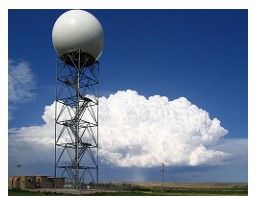
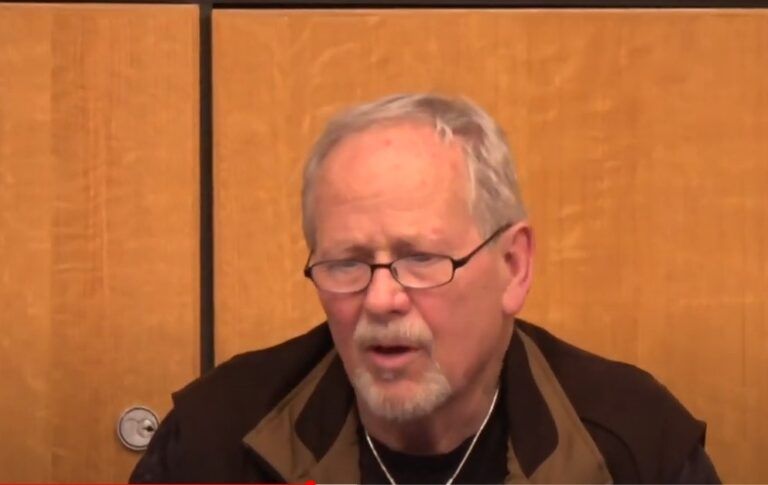
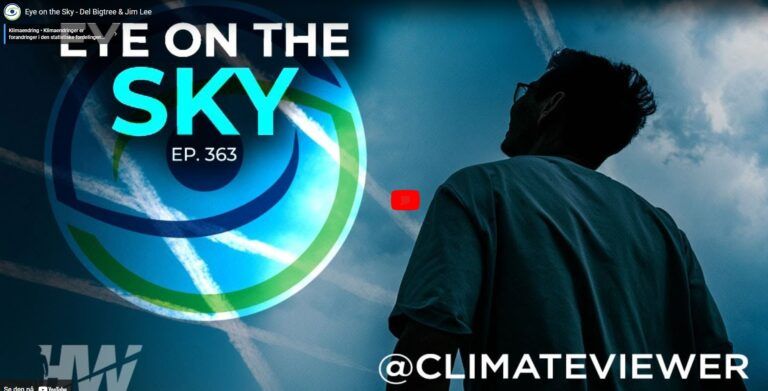



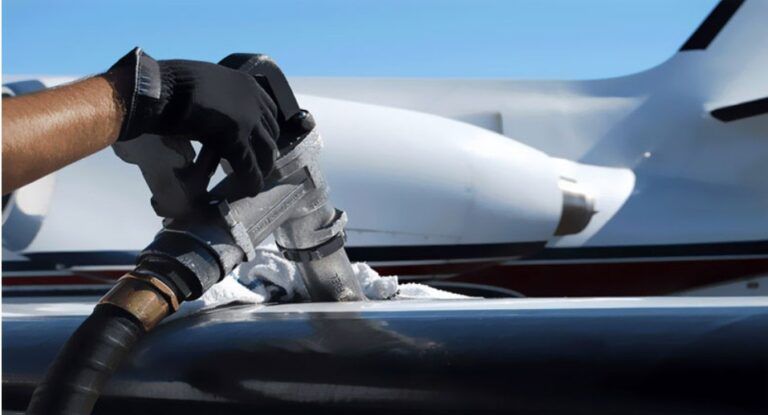
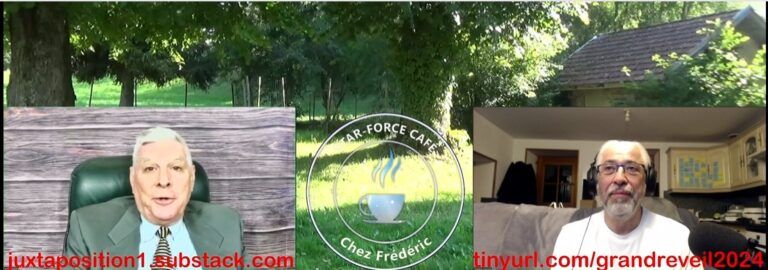
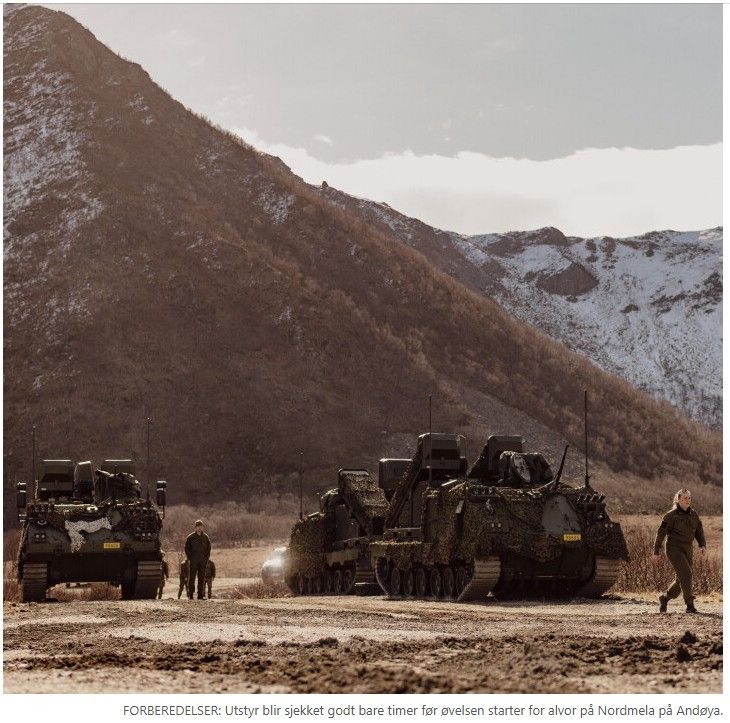


+ There are no comments
Add yours